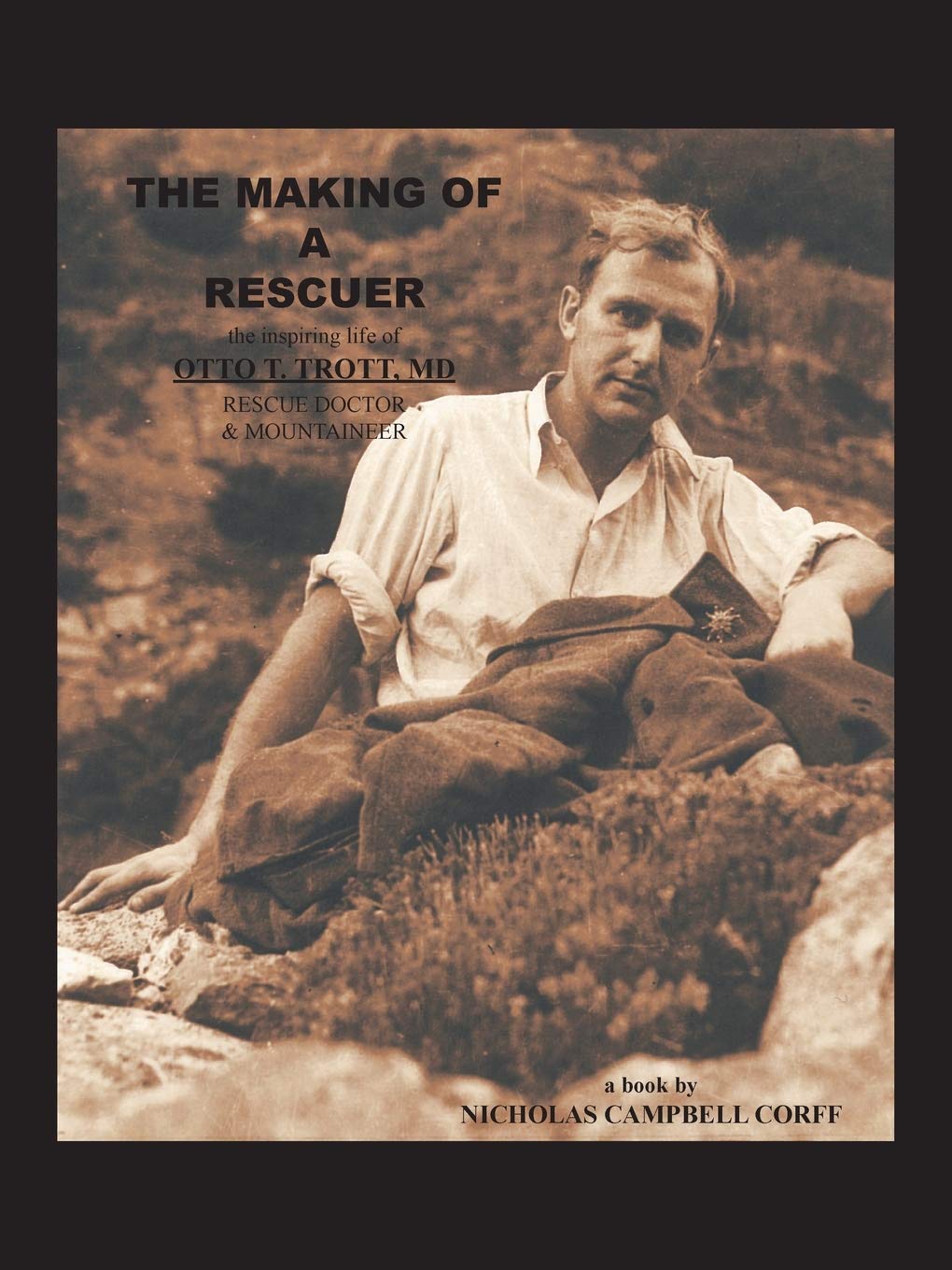Making of A Rescuer: An Otto-biography of the Life of Otto T. Trott, MD by Nicholas Campbell Corff
If you’ve ever taken a run down the Ottobahn between Chair 8 and Chair 7 at the Mt. Baker Ski Area, you may have wondered how it got its punny moniker. It’s named for Dr. Otto Trott, an early and longtime member of the Mt. Baker Ski Patrol, whose lists of accomplishments and accolades in the realms of mountaineering and mountain rescue are lengthy and internationally recognized. His first ascent of the west wall of Mt. Shuksan in 1939 has legendary status. He skirted a hanging glacier in pursuit of the most direct line up the ominous vertical rock face using a technique that was new at the time: walking straight up using the leading spikes of their crampons on the steep ice.
Trott’s immensely readable biography is lovingly documented by his son-in-law Nicholas Campbell Corff, who shares Trott’s reminiscences, diary entries, and candid photos to relate a purpose-driven and joyful life spent in the mountains. Trott is personally responsible for saving dozens (if not more) lives of climbers and hikers across the Cascades and up in Alaska, and indirectly credited with innumerable other rescues for pioneering mountain rescue techniques and creating the Mountain Rescue Council along with his good friends Wolf Bauer and Ome Daiber.
Born in 1911, Trott became entranced with mountain climbing at age 12 in his homeland of Germany. After earning his medical degree in in 1936, it became clear to Trott that because of a Jewish ancestor in his family tree, he would not be able to practice medicine nor stay in Germany under the increasingly oppressive Nazi regime. He resolved to emigrate to the United States, leaving behind his aging parents and his sisters. Trott landed a job teaching skiing at a golf course in Syracuse, New York, while completing another residency required to secure his American medical license. Next, Trott moved to Seattle and took a position as Resident Physician at the King County Tuberculosis Hospital. This locale was the perfect basecamp for adventures on Mount Rainier and throughout the Northwest.
Trott quickly connected with the Mountaineers, who introduced him to “the most spectacular sight of a mountain I had yet seen in America”: Mt. Shuksan. On his first visit to the Mt. Baker area, he was joined by two teenagers: Fred and Helmy Beckey, who later achieved fame for their numerous first ascents throughout the Cascades and Coast ranges. Trott’s skill and fearlessness as a climber, skier, and outdoorsman made him good company on any expedition, but it was his medical training that made him a standout. He translated the seminal book “Mountain Rescue Techniques” from German, gave frequent lectures about the dangers of hypothermia, and designed special carts to transport injured climbers from precarious mountaintops. Trott was serving as Medical Coordinator for the Mountain Rescue Council in 1960 when he got the call to assist in the rescue of Jim and Lou Whittaker and others from Mt. McKinley, in what became one of the largest organized rescue efforts in North America to that point.
Trott fell in love with Mt. Baker (and at Mt. Baker, where he met his future wife while putting a cast on her broken leg). For many years, Trott and his family spent every weekend in a cabin that had served as a dressing room for Clark Gable during the filming of “Call of the Wild”. The tales of their family adventures are both heartwarming and inspiring, as it is clear that all of Trott’s four daughters loved the mountain life as much as their energetic, irrepressible father.
Although that cabin was bulldozed to put in the ski area parking lot, Trott built another one near Glacier, and you can savor Trott’s biography “on location” by reserving a few nights – search Airbnb for “75 year Mt. Rescue anniversary historic Trott cabin.”
If you have any backcountry hikes, ski trips, or climbing plans on the horizon, you’ll benefit by reading this book cover-to-cover. Addendums include Trott’s original pamphlet “Improvised First Aid for Severe Mountaineering Injuries.” Trott died at home in 1999, after having skied and climbed well into his 80s.
Reviewed by Christine Perkins, executive director, Whatcom County Library System
Originally reviewed in Cascadia Daily News, July 7, 2023

